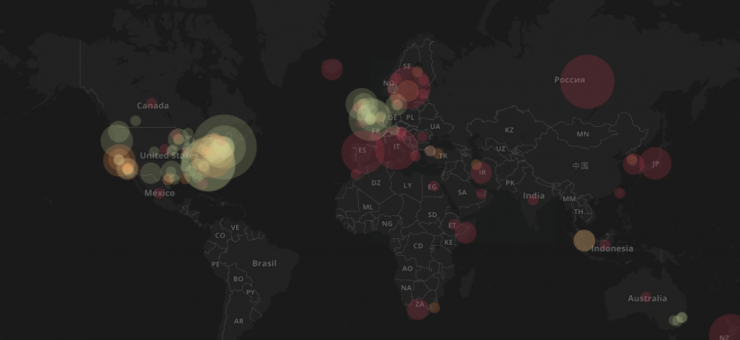Edward Snowden, Julian Assange, Aaron Swartz: are they modern heroes or cyber-criminals? The right to be forgotten is a defence of our privacy or a censorship act? Are Google services a way to empower citizens or an unfair exchange of our data for free services? There isn’t a unique answer to such questions, which are just the most visible part of a wider phenomena: the radical impact of digital technologies on society.
In the 2014/2015 edition of the DensityDesign course we visually explored with the students how the digital technologies are affecting many sectors of our life and society. The focus is on the public discussion emerging on such topics: how are they perceived, who is leading the debate? How the discussion is evolving?
The course is therefore focused on the web, performed through the web, and released on the web. Collecting, analysing and visualizing information coming from this medium, each group of students identified one specific topic and explored it.
During the course, as designer, we reflected on the relationship with the digital in our daily design experience. How can we use our visual knowledge to communicate a such complex topic? Information visualization, during the course, is used both as analytical tool, to understand and make sense of the observed phenomena, and as communication device, providing visual narratives on the acquired knowledge. The aim is to stress information visualization limits, to identify new solutions.
The course is divided in two main parts. The first one is aimed at analysing the topic using official sources (e.g. national and internationals statistical sources) to gather the big picture of the phenomenon. Each students’ group was asked to create a single page website to visualize and communicate it.
In the second part, students were asked to analyse the debate “in vivo”, collecting data from web sources, adopting approaches inspired by Digital Methods. The second part outputs are a digital report of the exploration and an interactive website presenting the results of the analysis.
Visit the following links to see the resulting projects.
The Italians and the web
See te results of first phase: “The Italians and the web”
Controversies on the Web
See te results of the second phase: “Controversies on the web”



